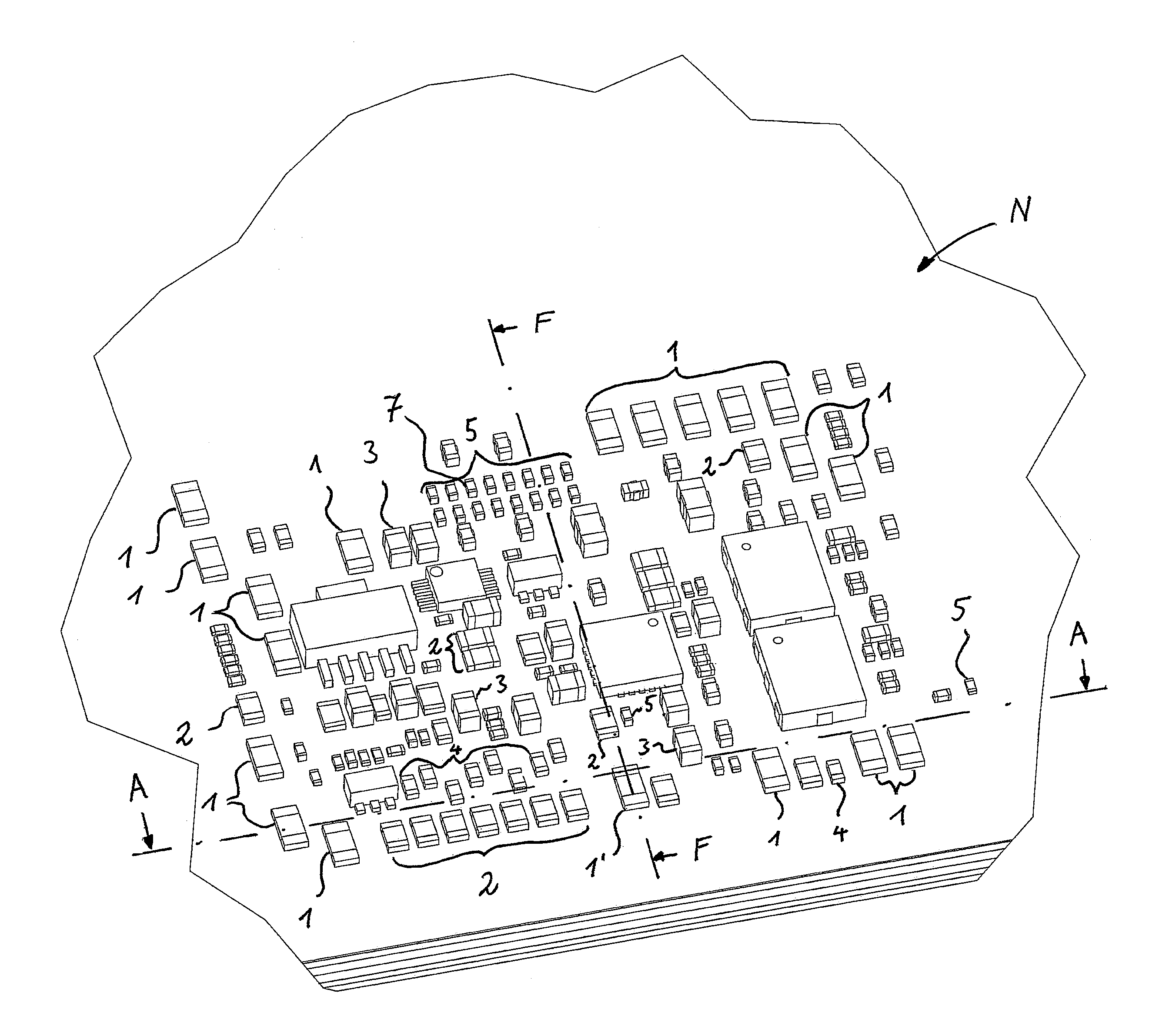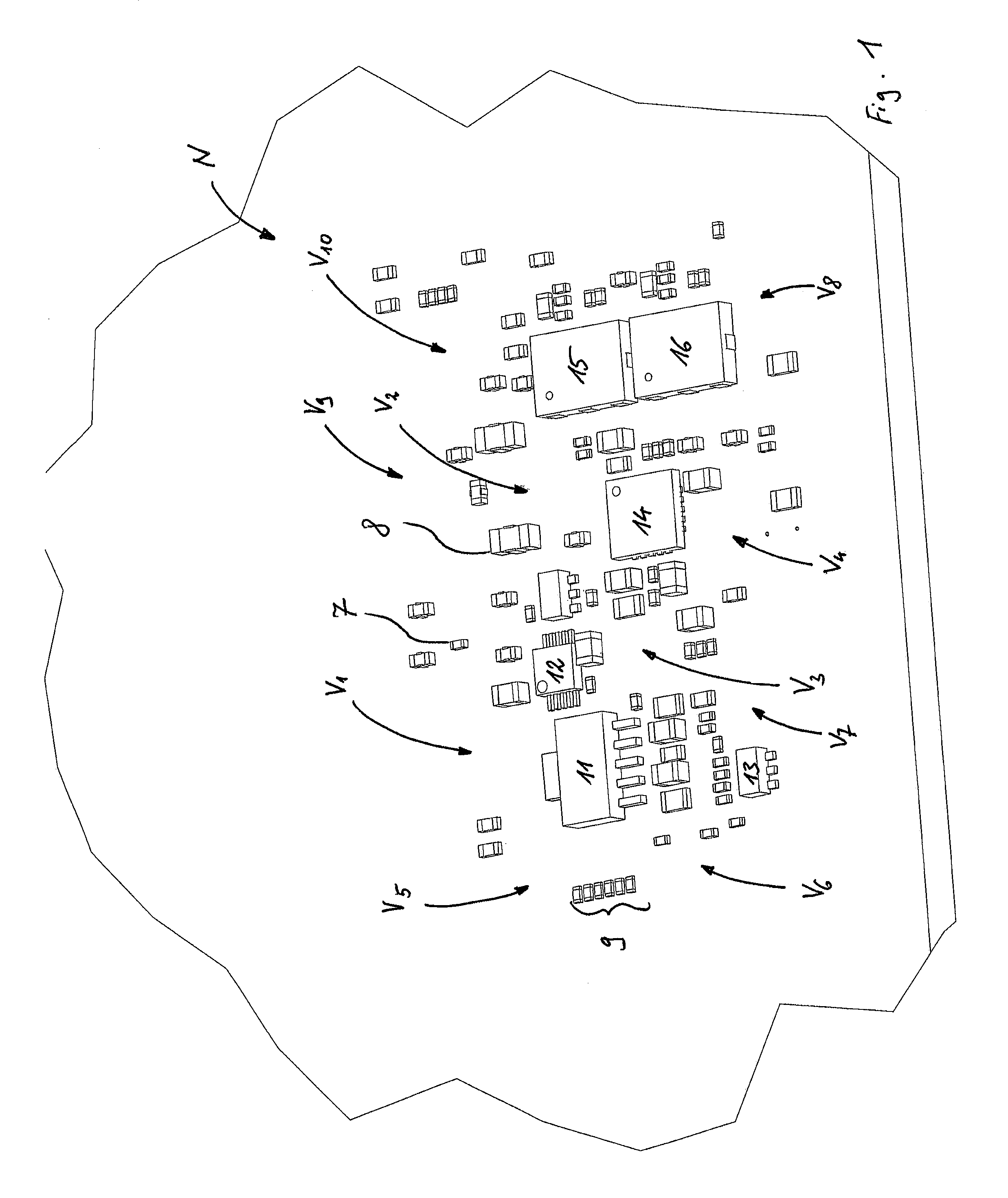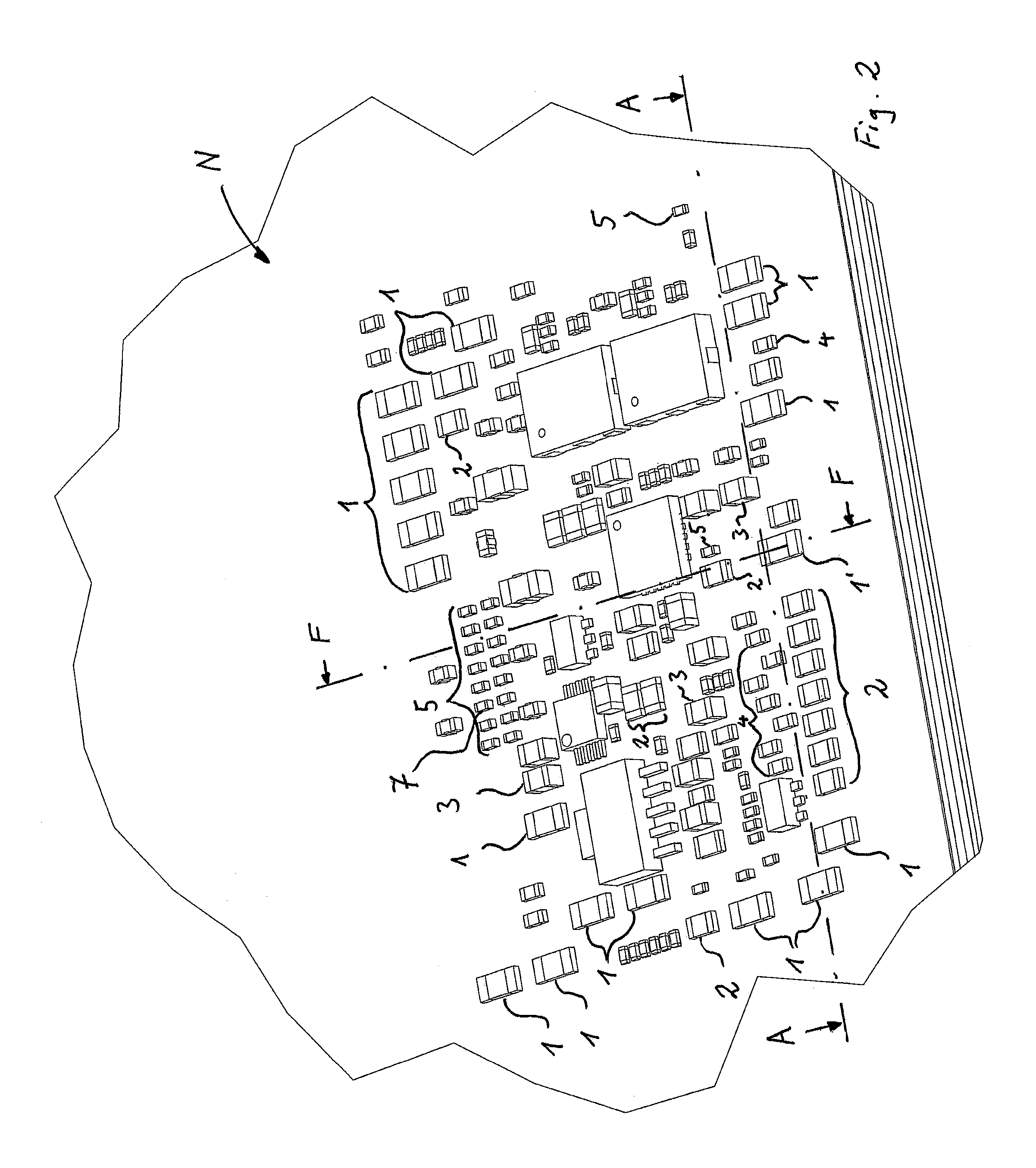Method of cooling electronic circuit boards using surface mounted devices
a technology of electronic circuit boards and surface mounted devices, which is applied in the direction of printed circuit aspects, electrical apparatus contructional details, lighting and heating apparatus, etc., can solve the problems of limited space available on or around the components, higher acoustic noise levels, and the effect of increasing the effective surface of the board
- Summary
- Abstract
- Description
- Claims
- Application Information
AI Technical Summary
Benefits of technology
Problems solved by technology
Method used
Image
Examples
first embodiment
[0050]In a first embodiment shown in FIG. 3 to FIG. 6, the solder pads 26, 28 are also (thermally) connected to a first 27, second 29, third 31, fourth 33 and bottom layer 35 by means of through holes 21 and 22.
second embodiment
[0051]In a second embodiment shown in FIG. 7 to FIG. 10 (as an example of being connected to one or more layers), the solder pads 26, 28 are only (thermally) connected to the first layer 27 by means of microvias 21′ and 22′ without any connection to the other layers 29, 31, 33 and 35.
[0052]Of course, the heat sink device 1′ can be connected via solder pads 26, 28 to circuits on the top face in both embodiments only or to any combination of layers as required or possible during the layout of the board.
[0053]The heat sink devices 1, 2, 3, 4, 5 distributed on the printed circuit board N filling free spaces (places in the board layout without any electrically functional SMD device) act as a distributed heat sink cooling the board. Therefore, the heat sink devices are connected to one layer, particulary the top face 25 or to any combination of layers 25, 27, 29, 31, 33 and 35 of the board N.
[0054]In this way, it is possible to improve the cooling performance of the board without increasi...
PUM
 Login to View More
Login to View More Abstract
Description
Claims
Application Information
 Login to View More
Login to View More - R&D
- Intellectual Property
- Life Sciences
- Materials
- Tech Scout
- Unparalleled Data Quality
- Higher Quality Content
- 60% Fewer Hallucinations
Browse by: Latest US Patents, China's latest patents, Technical Efficacy Thesaurus, Application Domain, Technology Topic, Popular Technical Reports.
© 2025 PatSnap. All rights reserved.Legal|Privacy policy|Modern Slavery Act Transparency Statement|Sitemap|About US| Contact US: help@patsnap.com



